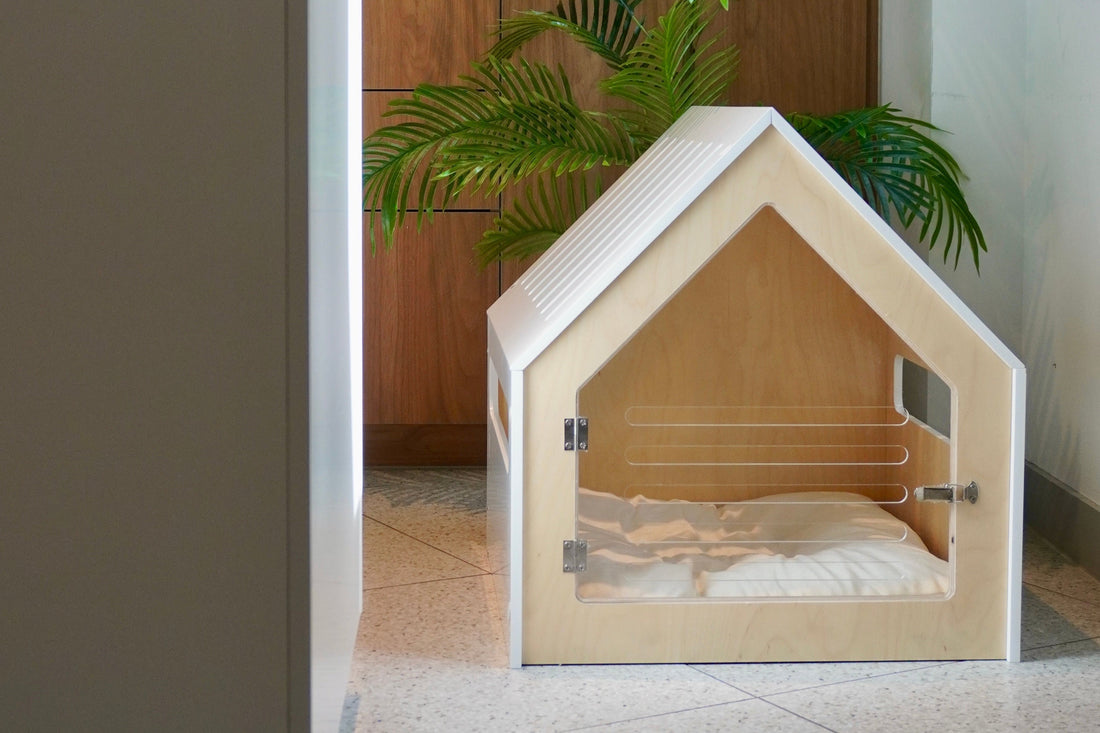
A Complete Guide to Crate Training
Share
Crate training is one of the most effective ways to help your dog feel safe and secure while you’re not around. Whether you’re trying to manage a new puppy or provide a safe haven for your adult dog, crate training offers a host of benefits — from house training to giving your dog a personal space they can call their own.
What is Crate Training?
At its core, crate training is about teaching your dog to enjoy spending time in a crate, not as a punishment, but as a comfortable, private space. Think of it like your dog’s personal retreat. Crates come in all shapes and sizes, but a well-sized crate will give your dog enough room to stand up, turn around, and lie down comfortably.
For dogs, especially puppies, a crate is more than just a tool for travel; it’s their den — a place where they can rest, relax, and feel safe. When used properly, a crate becomes a go-to sanctuary for your dog, allowing them to retreat when they need to relax or take a break.
Why Crate Train?
There are many reasons why crate training can be beneficial for both you and your dog:
Safe Space: It provides your dog with a safe, quiet space when you're away or when they need a break from the hustle and bustle.
House Training: A crate is an essential tool in housebreaking because dogs naturally avoid soiling their sleeping area. This makes them less likely to have accidents inside the crate.
Prevents Destructive Behavior: When you're not around to supervise, a crate can prevent your dog from getting into trouble, like chewing on furniture or getting into dangerous situations.
Travel Safety: Crates are great for car travel, as they keep your dog secure, helping to prevent distractions while driving.
Getting Started with Crate Training
1. Choose the Right Crate
The first step in crate training is picking the right crate. It should be big enough for your dog to comfortably stand, turn around, and lie down in. If it’s too large, your dog might use one corner as a bathroom. This is a crucial mistake to avoid. Dogs don't think like we do, and whilst humans might always desire a bigger bedroom, a bigger crate than required is counter productive for dogs.
There are various types of crates, such as wire crates, plastic kennels, and fabric crates. Wire crates are great for ventilation and visibility, while plastic kennels often offer more privacy. Wooden crates are more premium and with the right design, can be a furniture piece, one that is adored by both dog and guardian.
https://blocksau.com/products/copenhagen
2. Make it Comfortable
Your dog needs to view the crate as a cozy, inviting space. Place a soft blanket, some of their favorite toys, and perhaps a treat inside. The goal is for your dog to associate the crate with positive experiences.
3. Gradual Introduction
Don’t rush your dog into the crate. Start by leaving the door open and letting them explore at their own pace. Drop treats inside, allowing them to enter and exit freely. You want them to understand that the crate is not a place for confinement or punishment, but a safe space.
4. Short Sessions First
Once your dog is comfortable entering the crate, close the door for short periods while you’re in the room. Gradually increase the time they spend inside, rewarding them with praise and treats when they stay calm.
5. Slowly Increase Duration and Distance
When your dog seems to enjoy being in the crate, start leaving the room for short periods. The key is to increase the time gradually, so your dog doesn’t feel abandoned or stressed. Never leave your dog in the crate for too long — puppies, in particular, should not be crated for more than a few hours at a time.
6. Consistency is Key
As with any training, consistency is crucial. Establish a routine and stick to it. If you make the crate a part of your dog’s daily life, they’ll start to view it as a normal, positive part of their environment.
Common Mistakes to Avoid
Using the Crate as Punishment: The crate should always be a positive space. If your dog associates it with punishment, they will fear it. Always use it as a tool for comfort, not as a place for discipline.
Crating for Too Long: Dogs, especially puppies, need plenty of exercise, bathroom breaks, and social interaction. Don’t leave them in the crate for hours on end. Ensure they get regular walks, playtime, and attention.
Being Too Quick to Let Them Out: If you open the door as soon as your dog starts whining, they’ll learn to associate whining with being let out. Wait for them to settle before opening the door to encourage calm behavior.
The Benefits of Crate Training Long-Term
Once your dog is crate trained, they will likely enjoy having a safe, private space to retreat to whenever they need some downtime. It’s also a great tool when you’re traveling or moving houses — your dog will already be familiar with the crate, making the transition easier.
Ultimately, crate training is about building trust. It allows your dog to feel secure and helps you manage their behavior when you’re not around. With a positive, gradual approach, crate training can become a routine that both you and your dog enjoy.